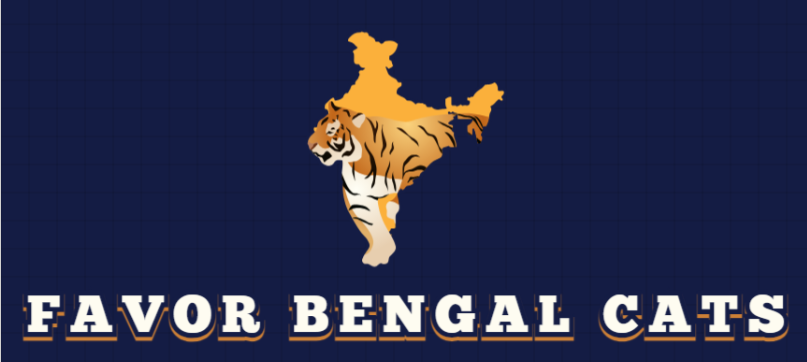About Bengals
Bengal Information
Bengal Basics
Where Are Bengal Cats From?
The Bengal cat is a relatively new breed and was derived from crossing domestic cats with the leopard cat beginning in 1965. A California woman by the name of Jean Mill decided to cross the Asian Leopard Cat with domestic cats in hopes that it would deter the growing interest in trying to tame and poach the leopard cat.
Were Bengal Cats Bred for a Reason?
The Bengal was bred for his intriguing and exotic coat type as well as to help the plight of the leopard cat by downbreeding to give them a more predicatable temperament.
How Many Types of Bengal Pedigrees Are There?
There are Bengal Brown Spotted, Bengal Snow Leopard, and Bengal Marble types of Bengal cat, all differentiated by their coat color and patterning.
Are Bengal Cats Polydactyl?
The mutation for polydactylism can spontaneously occur in any cat breed.
Bengal Lifespan
The lifespan of a Bengal is around 12-16 years.
Bengal Appearance
How Big Does a Bengal Get?
13-16 inches
How Much Does a Bengal Weigh?
9-16 lbs
When Does a Bengal Stop Growing?
Up to 2 years
What Color Coat Does a Bengal Have?
Bengals have highly contrasted coats, and are the only cats to have rosettes on their coat like those of Leopards, Jaguars, and Ocelots. They are usually light brown to orange.
What Eye Colors Can a Bengal Have?
Bengals typically have blue or green eyes.
Bengal Temperament & Personality
How Vocal/Talkative are Bengal Cats?
Bengals are not noted for their vocality, though of course they express themselves when necessary.
How Affectionate/Friendly are Bengal Cats?
Bengals are quite affectionate, which has helped make them a popular breed.
Are Bengal Cats Good with Other Cats?
Bengals are quite social cats, and usually do well with other cats, though they can sometimes be territorial.
Are Bengal Cats Good with Dogs?
Bengals can get along well with dogs, though can sometimes be territorial, so proper socialization is key to a happy coexistence.
Are Bengal Cats Good Mousers/Hunters?
Bengals have the stamina and wherewithal to be quite skilled mouse hunters.
Are Bengal Cats Good Indoor Cats?
Yes. For safety reasons, it is recommended that all cats be kept indoors regardless of their individual preferences
Are Bengal Cats Good Lap Cats?
Bengals have retained some of their “wild” ancestry and do not necessarily love to be held in one place, though if it’s their idea, they may well make themselves at home in your lap.
What Do Bengal Cats Like to Do?
Bengals are incredibly entertaining and adept climbers, and will go as high as they can. They also are incredibly intelligent, quick learners, and can even be taught to relieve themselves in the toilet!
How Big of a Difference is There Between a Male and Female Bengal?
Male Bengals are larger than females.
Bengal Diet, Grooming & Health
What do Bengal Cats Eat?
Ask your veterinarian what you should be feeding your Bengal — each cat is different.
Do Bengal Cats Eat Wet Food?
Yes
Do Bengal Cats Like Milk?
Milk is not recommended for cats.
How Much Do Bengal Cats Shed?
Bengals are minimal shedders.
What Type of Coat Do Bengal Cats Have?
Bengals have a vivid, smooth spotted coat that feels more like pelt than fur.
Do You Need to Groom a Bengal Cat?
Once a week brushing is recommended. In addition to brushing, all cats should have their claws trimmed every two weeks or so. Cats are also prone to peridontal disease and should have their teeth brushed two to three times a week.
Are Bengal Cats Hypoallergenic?
Yes
Do Bengals Have a Lot of Health Problems?
Bengals are hardy cats with few genetic problems.
What Diseases are Bengals Prone To?
- Hypertrophic Cardiomyopathy (HCM): HCM is an abnormal thickening of the left ventricle of the heart that leads to improper blood flow. It is the most common cause of heart disease in cats and can result in sudden death.
- Polycystic kidney disease (PKD): PKD is an inherited condition that causes cysts in the kidneys.
- Eye Issues: Progressive retinal atrophy (PRA), a progressive degenerative disease affecting the retina that eventually leads to blindness; and cataracts, a common eye condition that causes cloudiness in the eye and obstructs vision.
- Hip Dysplasia: Hip dysplasia occurs when the hip joint grows abnormally or is misshapen. The abnormal shape prevents the joints and sockets from adequately meeting one another, resulting in rubbing and grinding instead of sliding smoothly. Over time, the rubbing from dysplasia can cause a variety of issues such as pain, lameness, and secondary osteoarthritis. Surgery can be done to fix the joint if diagnosed before the onset of arthritis.
- Patellar Luxation: Also known as slipped kneecaps, patellar luxation occurs when slight abnormalities cause the knee joint to slide in and out of place. This can cause pain and occasional lameness. Surgical treatment is available for severe cases although many cats lead normal lives without treatment.
Purchasing vs Adopting a Bengal
How Much Does a Bengal Cost?
It costs around $75-$100 to adopt a Bengal. Conversely, it can be prohibitively expensive to buy a Bengal from a breeder, somewhere in the $1,000-$3,000 range.
Where Can I Adopt a Bengal
Bengal Shelters and Rescues
There are often many great Bengals for adoption at local animal shelters or rescues. Click below to find a shelter or rescue in your area!
